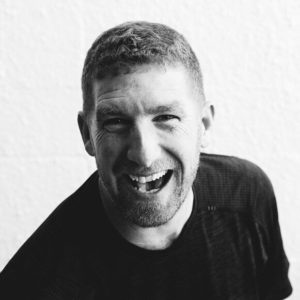Description
Let’s review the Anatomy that we now understand in its truest form and ask the questions ; Is living Tissue Deigned to be STRETCHED?
Let’s first ask NATURE!
We’re firstly not designed to fall, secondly, if we were naturally designed to stretch, babies would fall out & jujitsu wouldn’t be so effective!
So with this in mind how do we approach movement choices & influence our bodies more appropriately when we feel tight, stiff, or just enjoy stretching?
How do you define the entomology of the word Stretch?
Why do we need to Stretch?
What do we believe we’re actually stretching?
How do we achieve mobility & flexibility without compromising overall structural integrity in a practical way?
Anyway, finding solutions & utilizing science is all just the other side of a magnificent discussion, for those that are willing to listen & debate constructively.

About Paul Thornley:
Paul is a fully certified STOTT PILATES Lead Instructor Trainer but also an advanced neuromuscular therapist, after training with Leon Chaitow ND DO of the University of Westminster and Judith Delaney, director of American Neuromuscular Therapy Florida.
Paul is from Manchester, England and has been involved in the fitness industry for more than 25 years. Through his martial arts and military training he has developed a real passion for doing exercise right. His teaching style reflects his personality – clinical and precise – but he delivers it with a huge slice of humour.
Paul is a fully certified STOTT PILATES instructor.
He is a Merrithew Lead Instructor Trainer specialised in Fascial Movement and STOTT PILATES Matwork, Reformer, Cadillac, Chair and Barrels, and Injuries and Special Populations.
In his role as therapist and trainer of the STOTT Pilates method, Paul is constantly within the even evolving world of anatomy, often translating the scientific research to educate his clients and students to ultimate move more efficiently, understanding the impact of their exercise choices and how to alter their lifestyles to ensure longevity of the body an its systems.
Regularly attending the annual Biotensegrity instructed Cadaver, Paul stays abreast of the 21st Century Anatomy and Physiology research.
When you take a session with Paul, you get an insight into why we’re moving away from the traditional Biomechanics approach, and increasingly move to a more modern understanding of anatomy which is reflected in the Biotensegrity & Facial model.
It’s through these new concepts that you will be able to apply better strategies to our training, and pre/rehabilitation methods whether that be for general populations or athletic performance.







